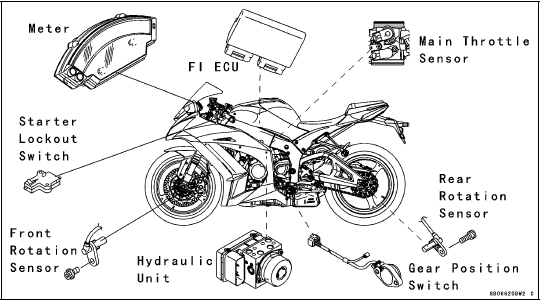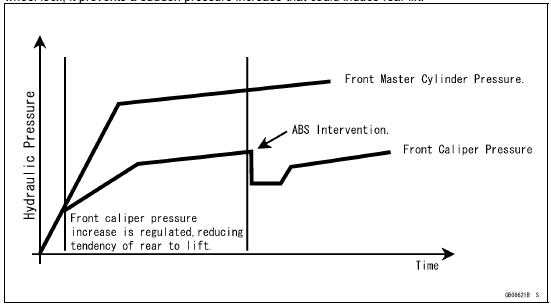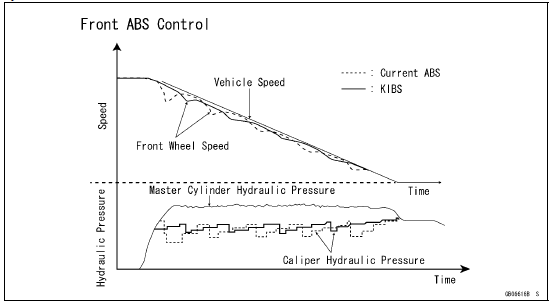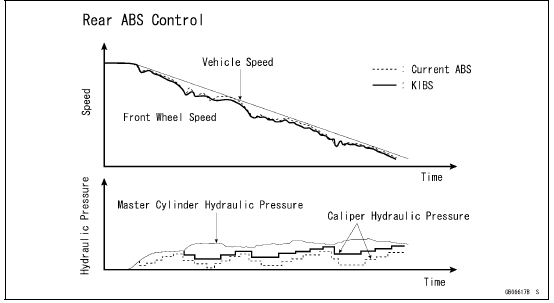


KIBS Control
1. ABS performance equivalent to the current model (enhanced braking stability)
By monitoring front caliper hydraulic pressure, KIBS regulates pressure increases reducing the tendency of the rear to lift. Before the ABS system fully reacts, KIBS system prevents the pressure from increasing too quickly thus suppressing rear lift. And after the ABS has decreased pressure to prevent wheel lock, it prevents a sudden pressure increase that could induce rear lift.

2. High-precision ABS to enhance front and rear braking performance
By monitoring front caliper hydraulic pressure, the KIBS system is able to regulate pressure changes precisely, so that slips are minimized resulting in smooth operation compared to the conventional ABS system.

3. Rear brake control enhancement during engine braking
By recognizing rear wheel slip due to engine brake force during aggressive throttle operation, and at high rpm or downshifting, the KIBS system prevents unnecessary ABS intervention to the rear wheel compared to the conventional ABS system.

 System Components
System Components Technical Information - Electronic Steering Damper (ESD/ZX1000JD/KD models)
Technical Information - Electronic Steering Damper (ESD/ZX1000JD/KD models)Exhaust Butterfly Valve Cable Removal
Remove the fuel tank (see Fuel Tank Removal in the Fuel
System (DFI) chapter).
Open the clamp [A] and free the cables.
Slide the dust covers [B].
Loosen the locknuts [A], and turn the adjusters [B] to give
the cable plenty of play.
Remove the clamp [A].
Remove the up ...
Coolant Deterioration Inspection
Remove the right lower fairing (see Lower Fairing Removal
in the Frame chapter).
Visually inspect the coolant in the reserve tank [A].
If whitish cotton-like wafts are observed, aluminum parts
in the cooling system are corroded. If the coolant is
brown, iron or steel parts are rusting. I ...
Clock
To adjust hours and minutes, do the
followings while the motorcycle is at a
stop.
Turn the ignition switch to ÔÇťONÔÇŁ.
Display the odometer in the multifunction
display. Refer to the ÔÇťMultifunction
DisplayÔÇŁ item in this section.
Push the lower button for more than
2 seconds. Bot ...